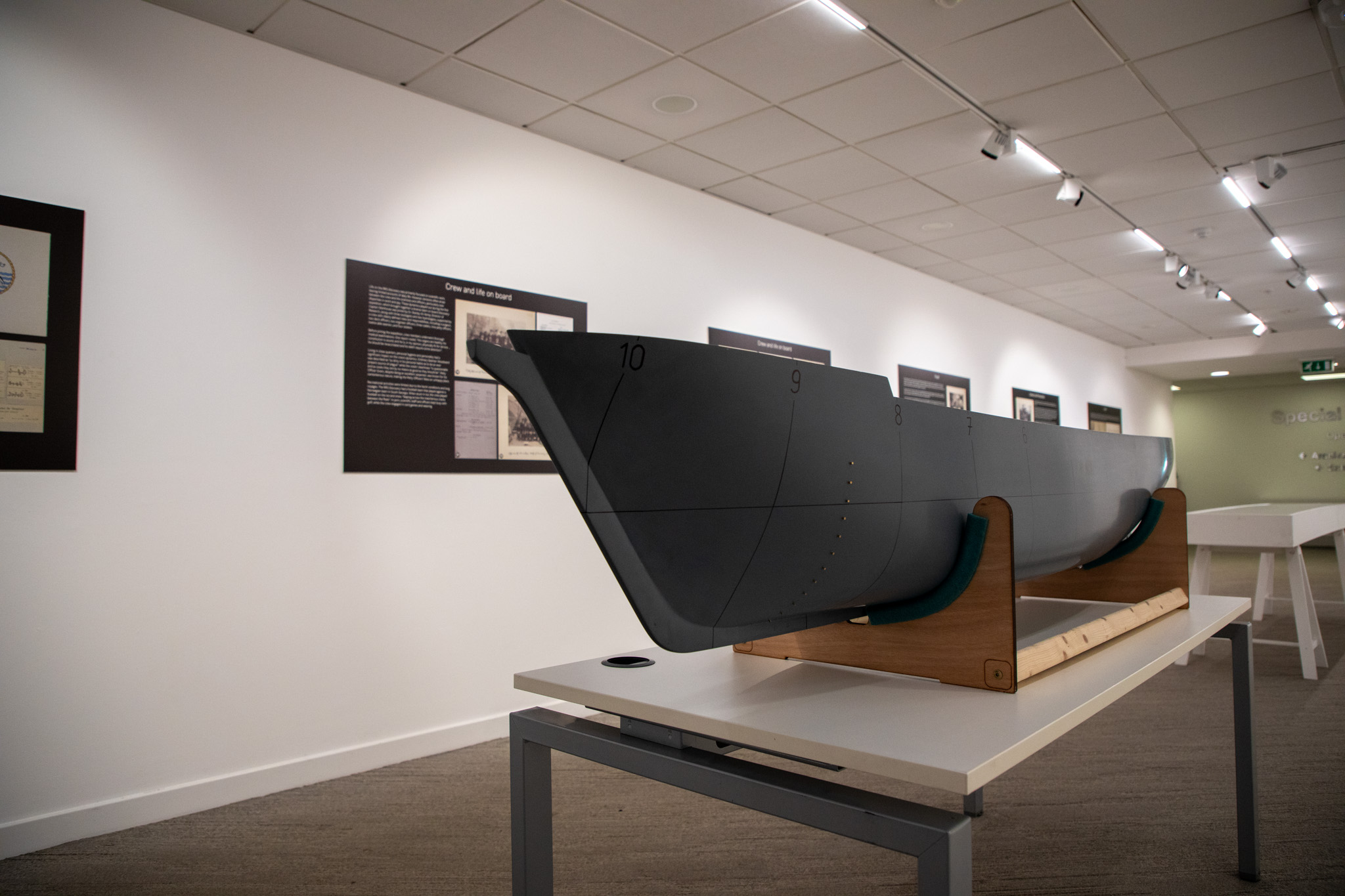
People are being invited to celebrate one hundred years of oceanographic research and discovery at an exhibition in the University of Southampton's Hartley Library.
Between Ice and Ocean: 100 Years of RRS Discovery marks the centenary of the Discovery Investigations, which heralded the modern era of British oceanographic research and conservation.
The RRS Discovery had originally been built in 1901 during what became known as the 'Heroic Age of Antarctic Exploration'. It was the first ship in the world purpose-built for scientific research in ice-packed Antarctica and launched the careers of Robert Falcon Scott, Ernest Shackleton and other notable polar explorers.
After being refitted by Vosper in Portsmouth in 1922, the ship became the first to carry the title Royal Research Ship (RRS).
The ship set sail from Falmouth in September 1925 with the aim of studying whale populations in the Southern Ocean, as well as the ecology and oceanography of the South Atlantic and Antarctic waters.
The Discovery Investigations continued until 1951 and provided evidence that several whale species were on the brink of extinction. This sparked some of the earliest marine conservation efforts and ultimately led to the global ban on commercial whaling, which remains in place today.
Today, the modern RRS Discovery, the fourth ship of its name and based at the National Oceanography Centre in Southampton, continues this tradition of undertaking important oceanographic research, boasting state-of-the-art capabilities that had not even been imagined possible 100 years ago.
The exhibition tells the story of the ship and the lives of the crew, officers and scientists who sailed on board.
It features a 2.5-meter-long recreation of the original RRS Discovery hull, which Southampton scientists have been rigorously testing in the University's towing tank. The replica was created using a 'digital twin' made by the same team.
.jpg)
Dr Michael Grant, from Coastal and Offshore Archaeological Research Services at the University of Southampton, says: "RRS Discovery was a wooden ship built not only to undertake scientific exploration but also to traverse the equator through to the Southern Ocean, and survive the Antarctic ice. The need to deal with lots of different, contrasting conditions resulted in a ship with some very unique design choices to meet these challenging environments.
"By recreating these conditions within our towing tank, we can see how the ship would have handled and how this compares to reports we have from those onboard."
Boards featuring documents, photographs and maps from the National Oceanographic Library's archives reveal fascinating details about life onboard the ship, such as the clothing they were allocated to withstand polar conditions, the supplies onboard, and even reports of unruly conduct.
.jpg)
Karen Robson, Head of Archives and Special Collections at the University of Southampton, said: "The National Oceanographic Library archive and the exhibition illustrate the fascinating story of human endeavour as well as dedication to scientific work in extreme conditions, which is a part of the Discovery history."
Today, RRS Discovery is docked at the Dundee Heritage Trust in Scotland, where it has been joined by its modern-day namesake to celebrate the centenary of the inaugural Discovery Investigations voyage and the founding of the British Royal Research Ship fleet.
The exhibition will be open to the public throughout October in Hartley Library's Level 4 Gallery.






